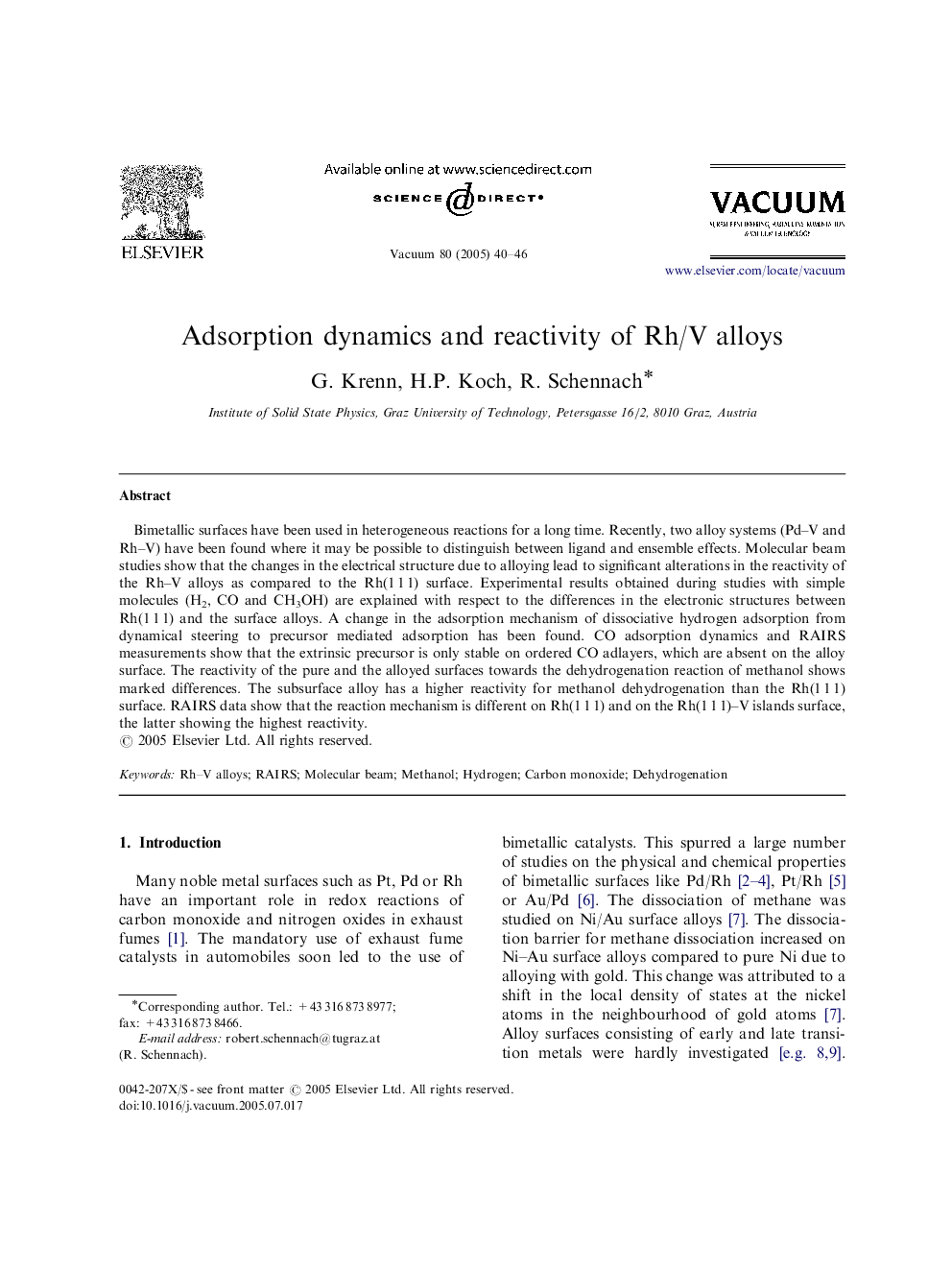| Article ID | Journal | Published Year | Pages | File Type |
|---|---|---|---|---|
| 9821475 | Vacuum | 2005 | 7 Pages |
Abstract
Bimetallic surfaces have been used in heterogeneous reactions for a long time. Recently, two alloy systems (Pd-V and Rh-V) have been found where it may be possible to distinguish between ligand and ensemble effects. Molecular beam studies show that the changes in the electrical structure due to alloying lead to significant alterations in the reactivity of the Rh-V alloys as compared to the Rh(1Â 1Â 1) surface. Experimental results obtained during studies with simple molecules (H2, CO and CH3OH) are explained with respect to the differences in the electronic structures between Rh(1Â 1Â 1) and the surface alloys. A change in the adsorption mechanism of dissociative hydrogen adsorption from dynamical steering to precursor mediated adsorption has been found. CO adsorption dynamics and RAIRS measurements show that the extrinsic precursor is only stable on ordered CO adlayers, which are absent on the alloy surface. The reactivity of the pure and the alloyed surfaces towards the dehydrogenation reaction of methanol shows marked differences. The subsurface alloy has a higher reactivity for methanol dehydrogenation than the Rh(1Â 1Â 1) surface. RAIRS data show that the reaction mechanism is different on Rh(1Â 1Â 1) and on the Rh(1Â 1Â 1)-V islands surface, the latter showing the highest reactivity.
Related Topics
Physical Sciences and Engineering
Materials Science
Surfaces, Coatings and Films
Authors
G. Krenn, H.P. Koch, R. Schennach,
